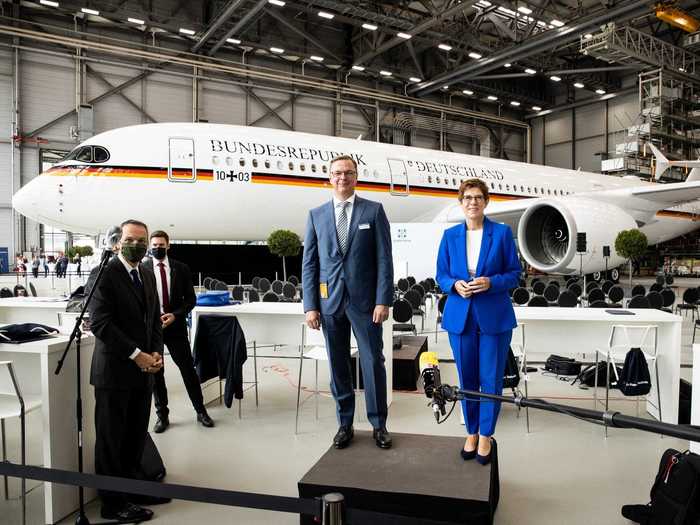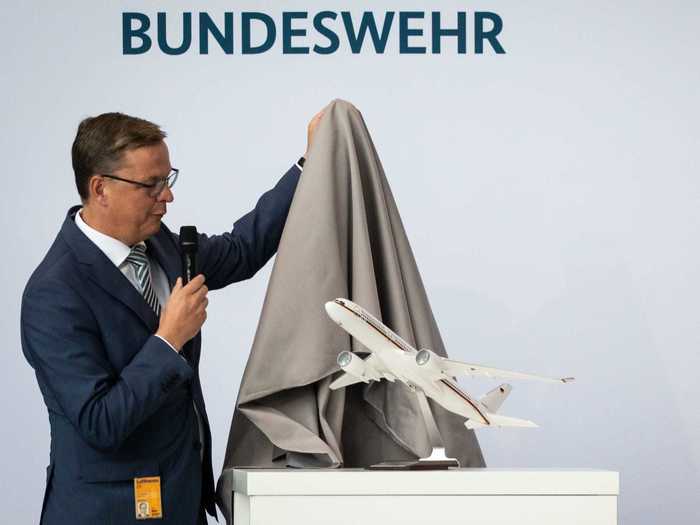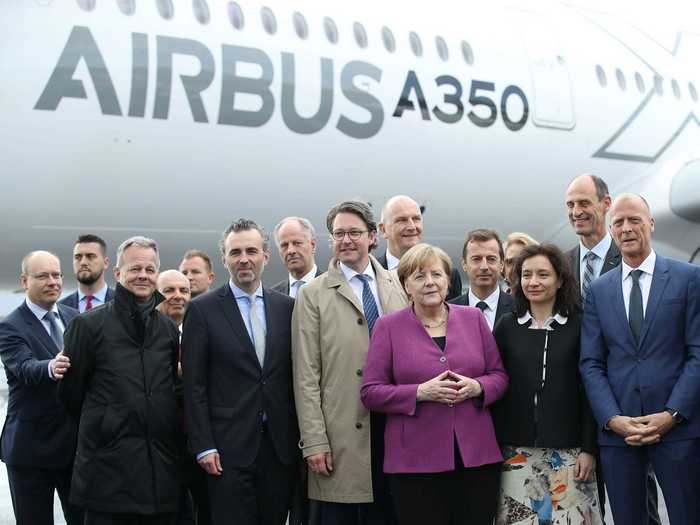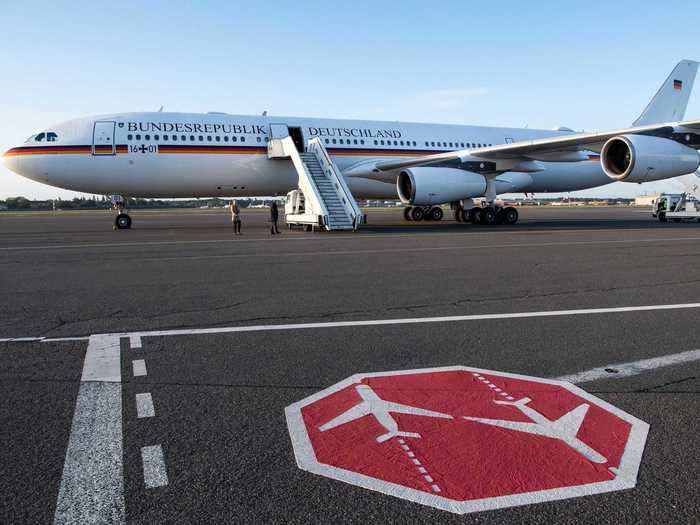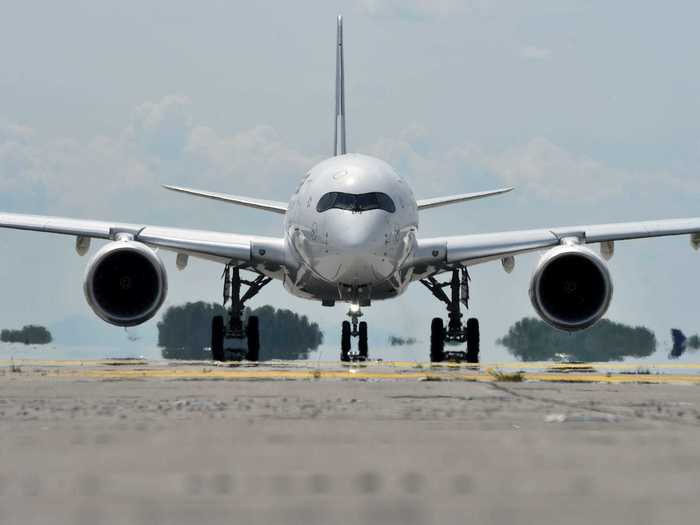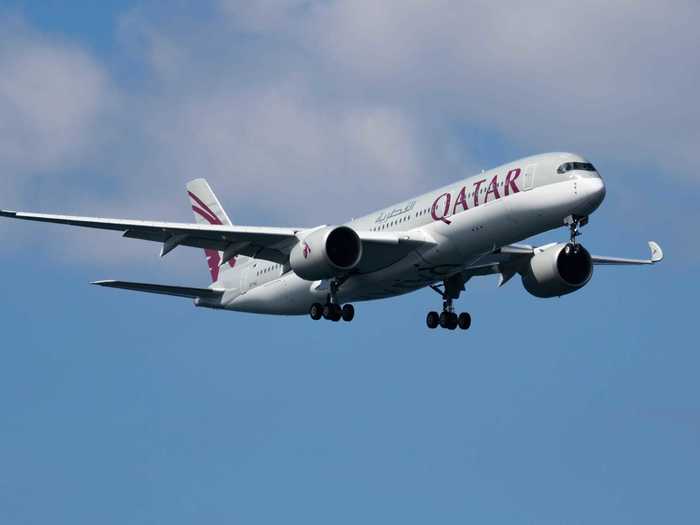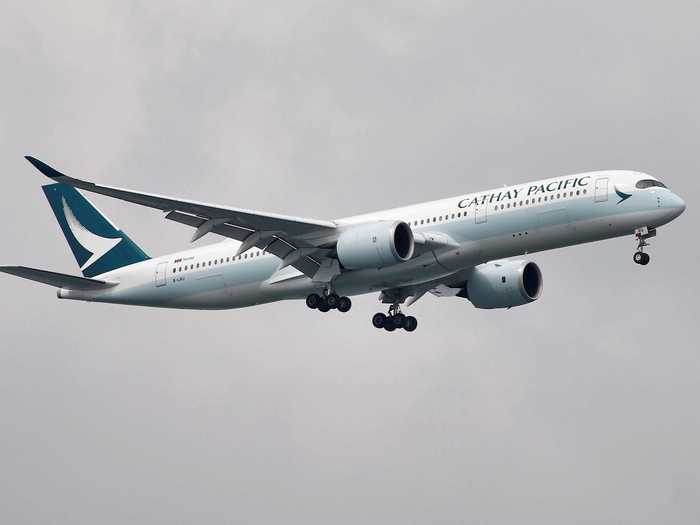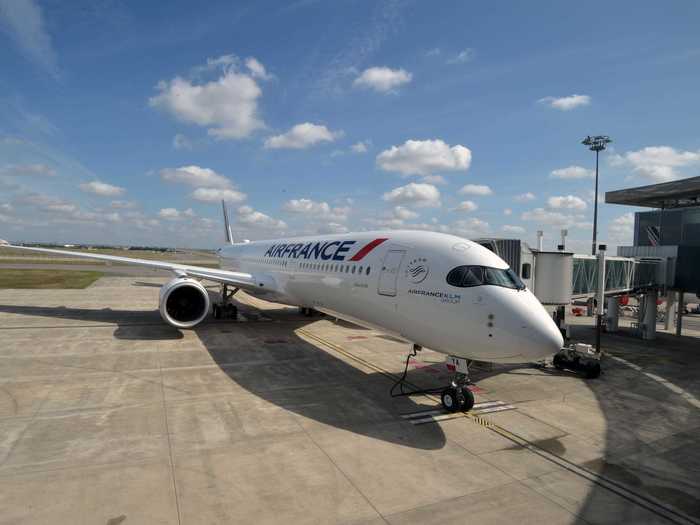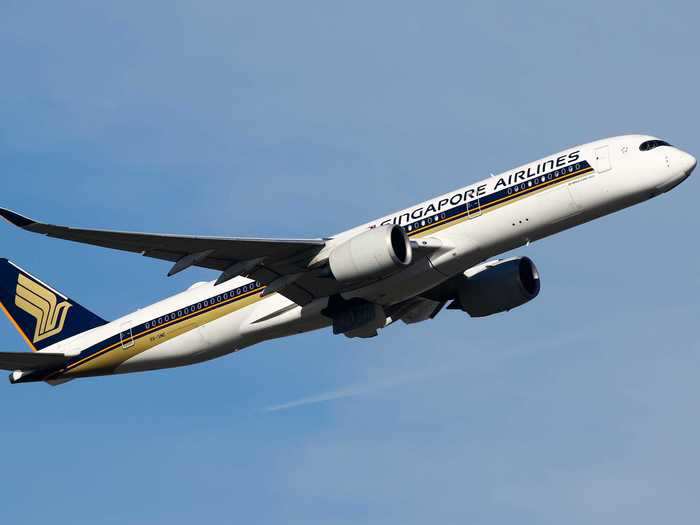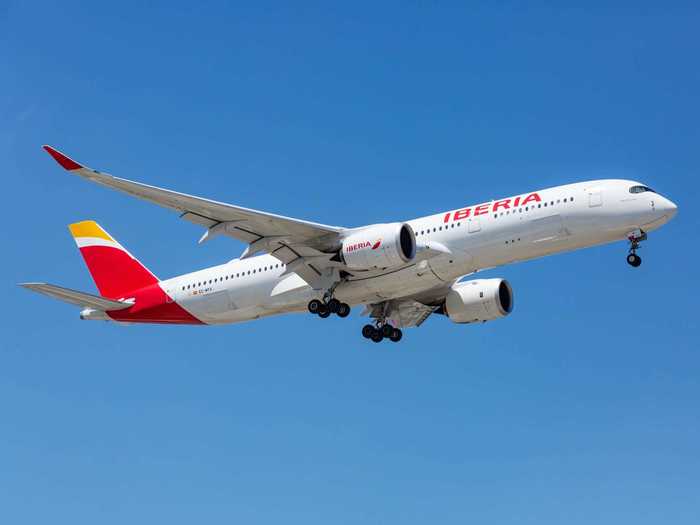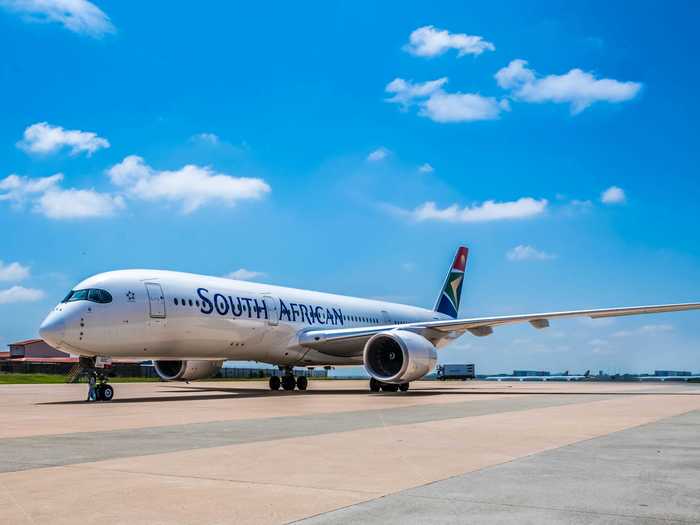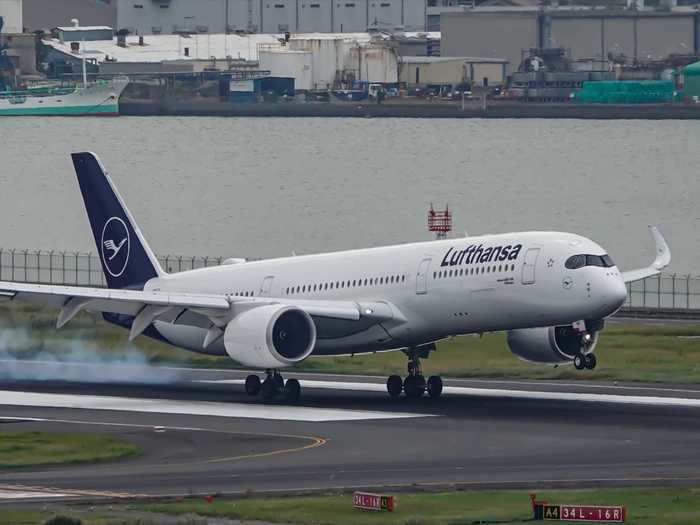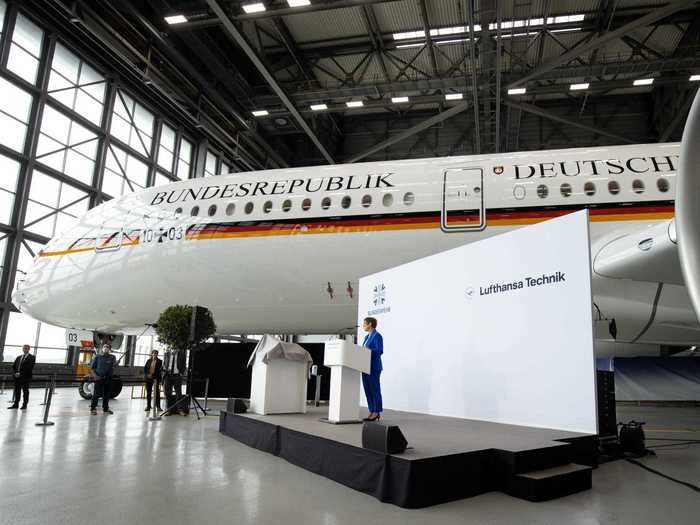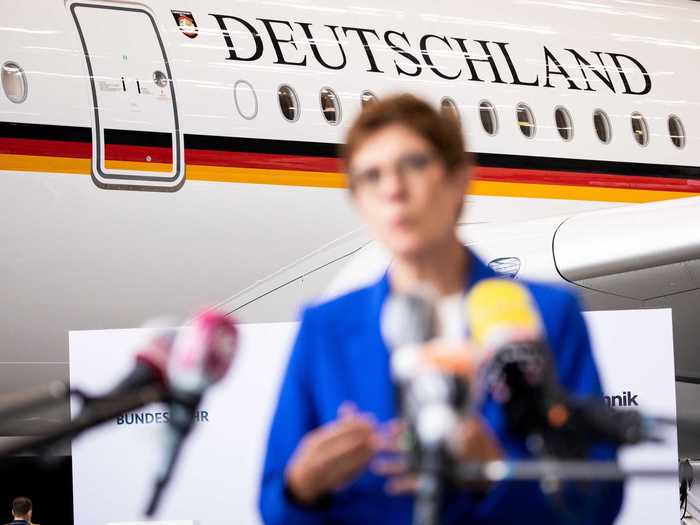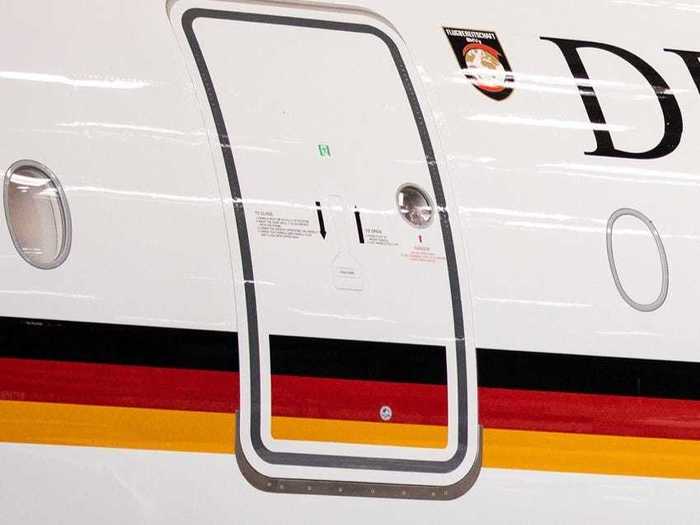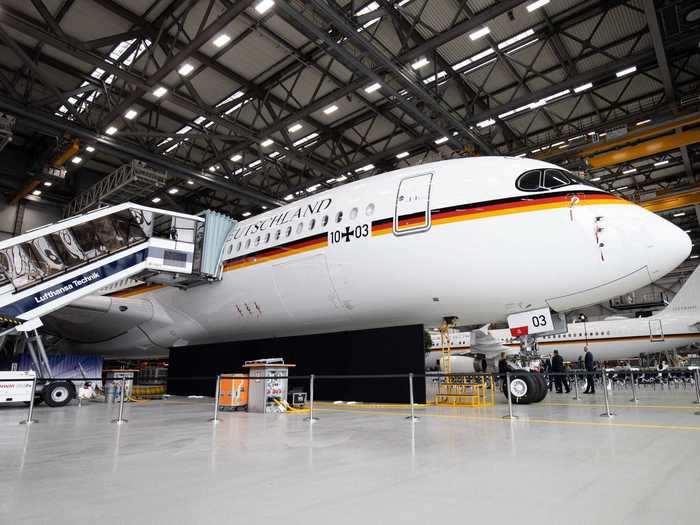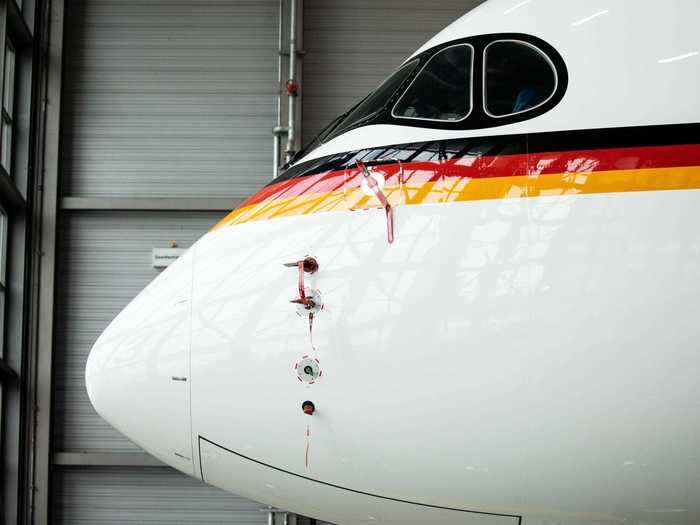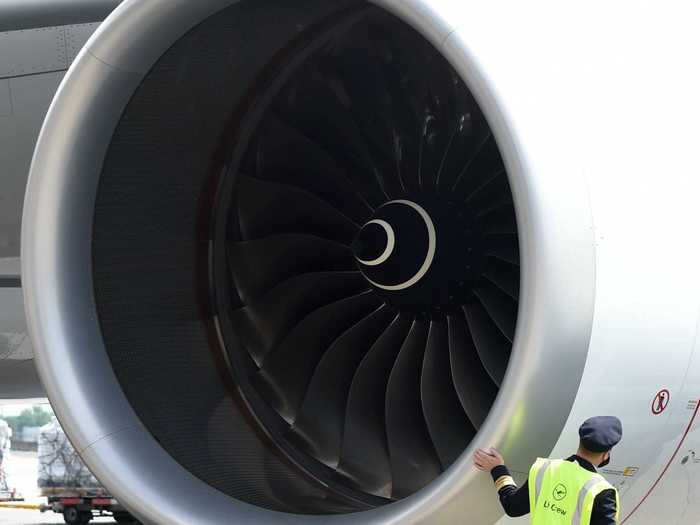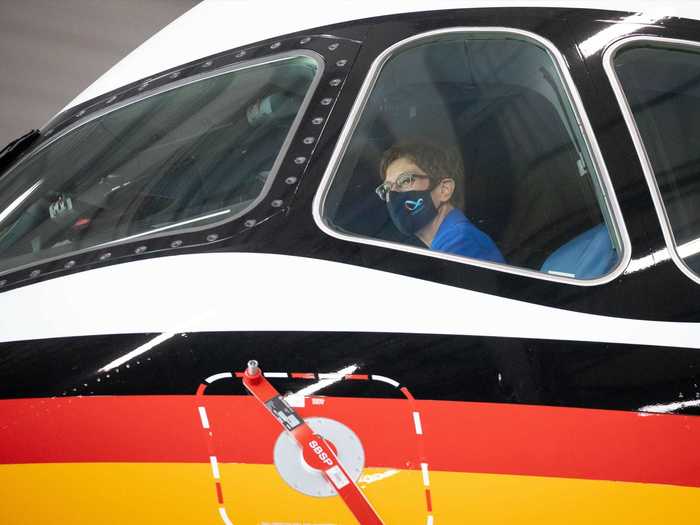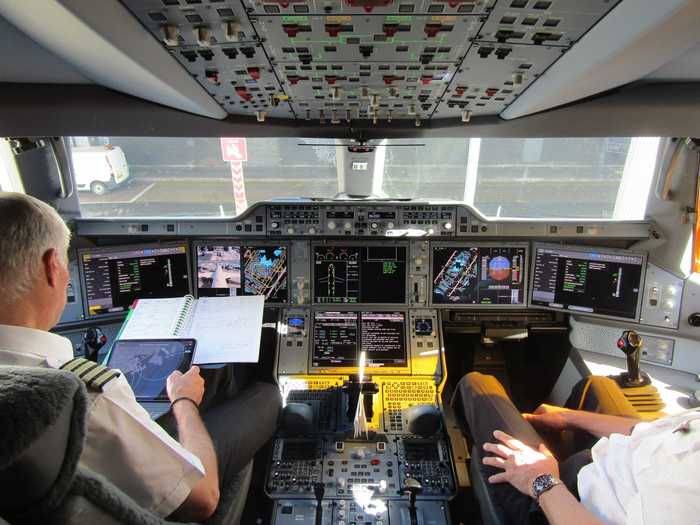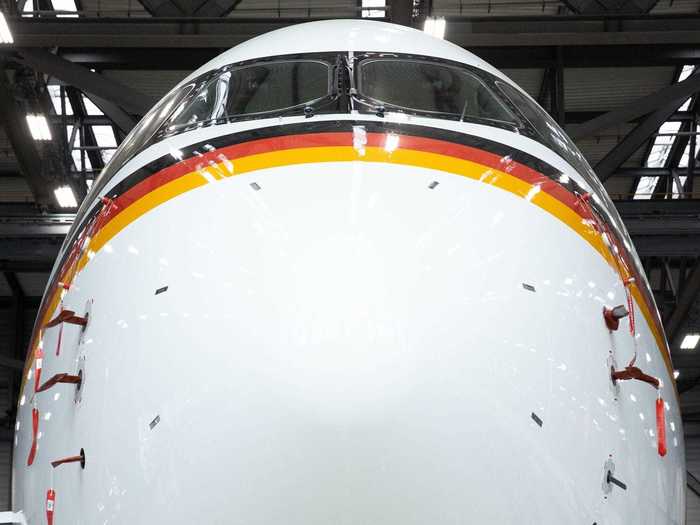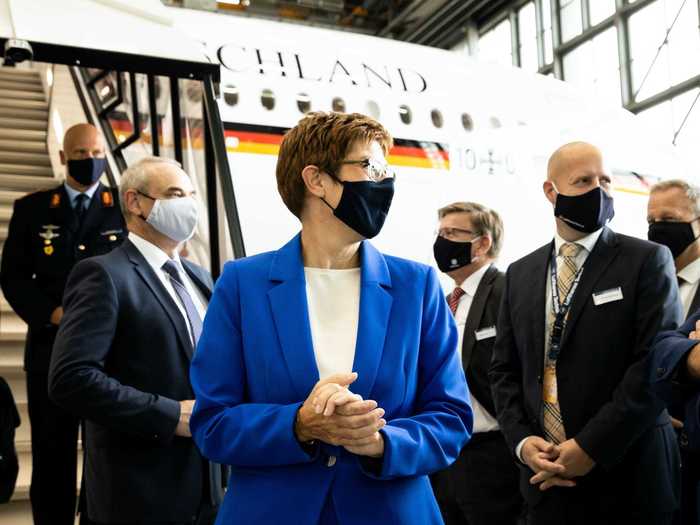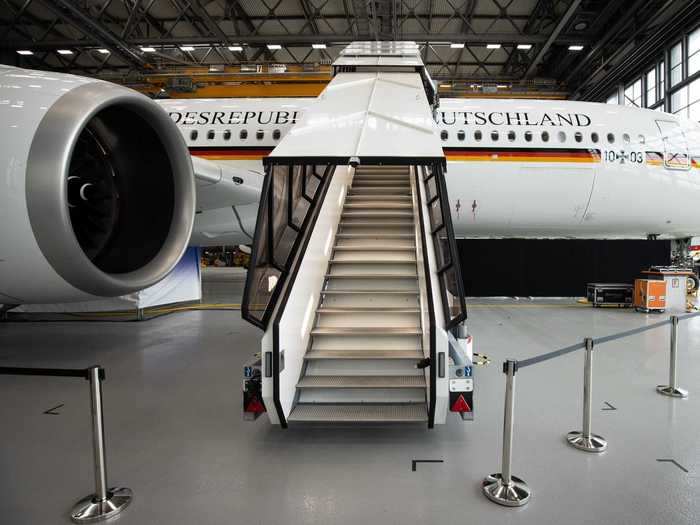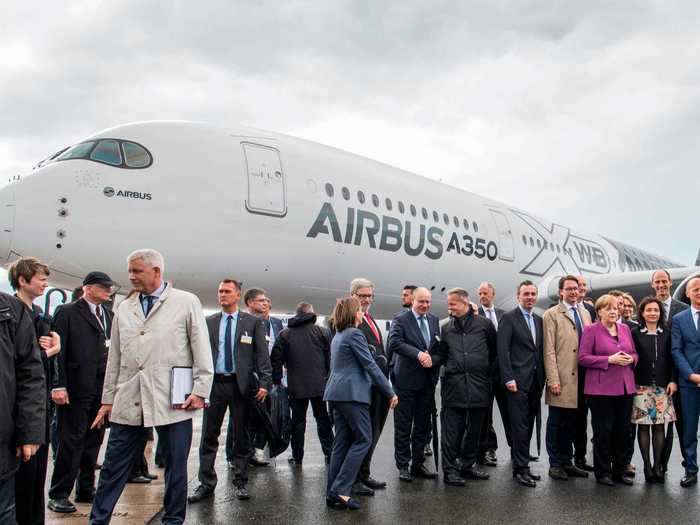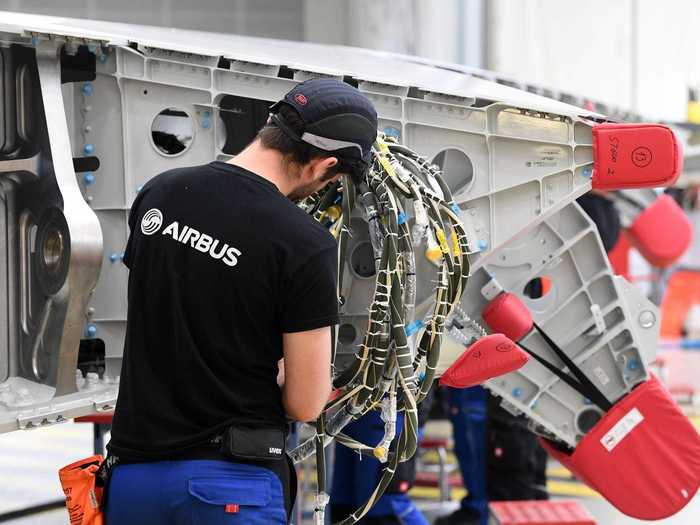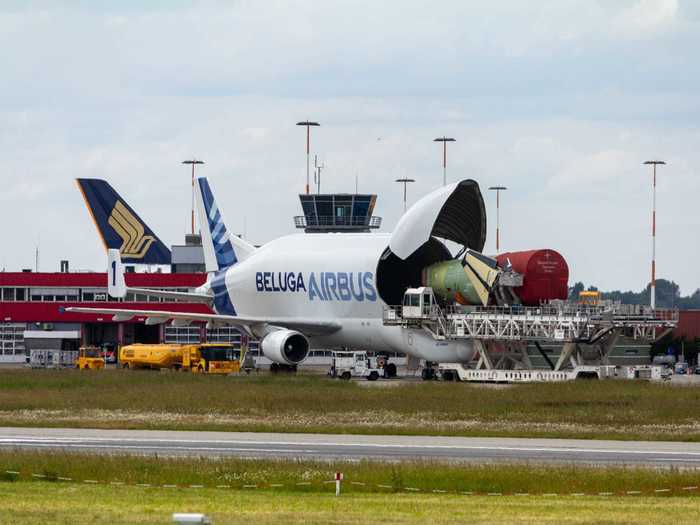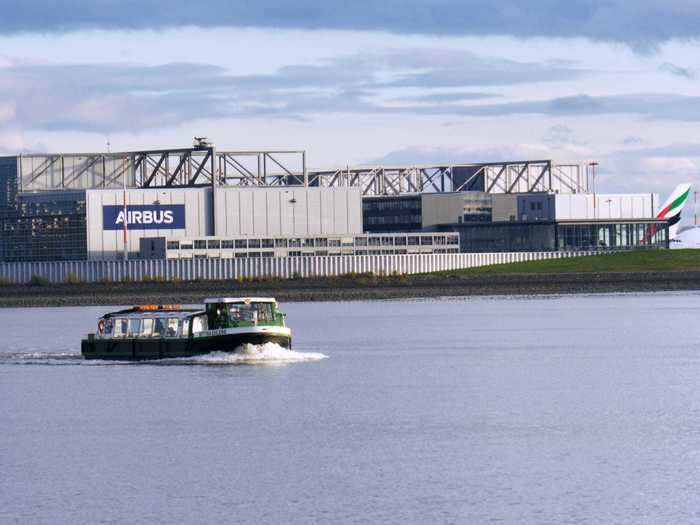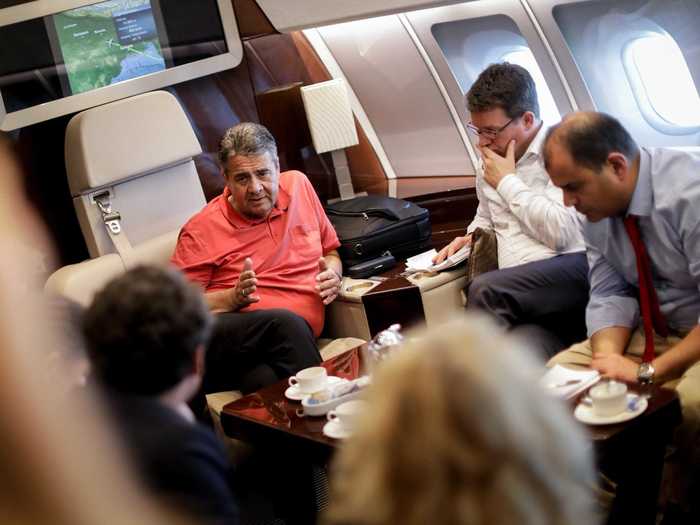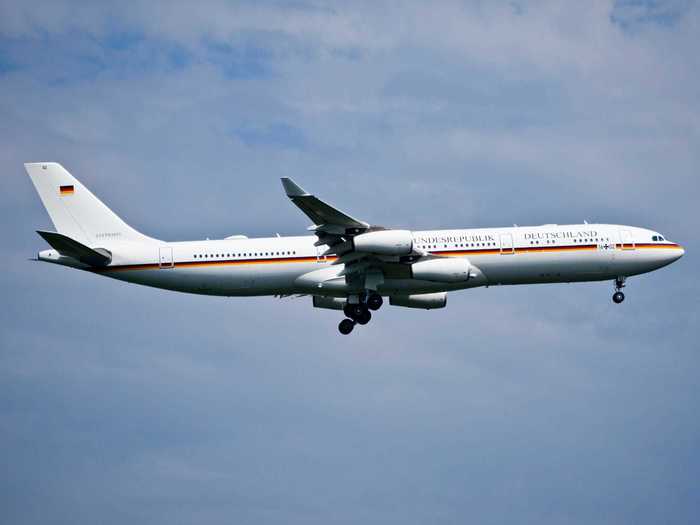The first Airbus A350-900 XWB of the German Air Force's VIP fleet.Christian Charisius/picture alliance/Getty
- Germany's new "Air Force One" was just delivered to the armed forces on Thursday after arriving at Lufthansa Technik for completion work in May.
- The Airbus A350-900 XWB will be replacing the country's A340-300 fleet acquired from flag carrier Lufthansa.
- The purchase came in 2019 following mechanical issues with the existing VIP aircraft, one of which forced Chancellor Angela Merkel to fly commercial to the G20 in 2018.
The German Air Force has a new flagship jet, the Airbus A350-900 XWB.
Lufthansa Technik on Thursday handed over the first of three A350s to the Bundeswehr – Germany's armed forces – that will fly Germany's top government officials around the world, including Chancellor Angela Merkel. The German government placed the order for the next-generation aircraft last year to replace its aging fleet of Airbus A340-300s jets that have served as aerial ambassadors since 2011, according to Airbus and planespotters.net.
The purchase followed a mid-air mechanical issue on the A340 fleet while Merkel was en route to the G20 summit in Argentina, according to Germany's state-funded international news outlet Deutsche Welle, forcing her to fly commercial instead. Much like the country's flag carrier, Lufthansa, the German government will benefit from the jet's efficiency by trading in four engines for two and gain additional range capabilities of around 800 nautical miles, according to Airbus.
The A350-900 XWB is one of Airbus' newest aircraft and has been rapidly growing in the long-haul fleets of airlines around the world with Germany being the first country to purchase the VIP variant for government use. As Germany is home to numerous Airbus production plants, parts of the plane were even manufactured in the country, although the final assembly took place in France.
Take a look at the new German "Air Force One."
German Defense Minister Annegret Kramp-Karrenbauer received the first Airbus A350-900 XWB in Hamburg on Thursday during a handover ceremony with Lufthansa Technik.
The first Airbus A350-900 XWB of the German Air Force's VIP fleet.
Christian Charisius/picture alliance/Getty
Airbus had delivered the aircraft in May but the interior completion work was handled by the maintenance, completions, repair, and overhaul division of the German flag carrier.
A model of the first Airbus A350-900 XWB of the German Air Force's VIP fleet.
Christian Charisius/picture alliance/Getty
Germany ordered three Airbus A350 aircraft in 2019 as a replacement to the aging Airbus A340-300 fleet that flies top government officials around the world.
German Chancellor Angela Merkel with an Airbus A350 aircraft.
Sean Gallup/Getty
Here's one A340 of the Bundeswehr's fleet. The four-engine jets were received second-hand from Lufthansa.
The German Air Force's Airbus A340-300 aircraft.
Bernd von Jutrczenka/picture alliance/Getty
But now, much like its flag carrier, the A340s will give way to the A350s, offering the government a modern and efficient aircraft to represent Germany abroad.
A Lufthansa Airbus A350-900 XWB similar to the one used by the German Air Force.
CHRISTOF STACHE/AFP via Getty
The A350 has exploded in popularity since its commercial debut in 2015 with Qatar Airways.
A Qatar Airways Airbus A350-900 XWB.
Soos Jozsef / Shutterstock.com
It's since joined the fleet of global carriers like Cathay Pacific...
A Cathay Pacific Airbus A350-900 XWB.
Reuters
Air France...
An Air France Airbus A350-900 XWB.
PASCAL PAVANI/AFP/Getty
Singapore Airlines...
A Singapore Airlines Airbus A350-900 XWB.
C. v. Grinsven/SOPA Images/LightRocket/Getty
Iberia...
An Iberia Airbus A350-900 XWB.
Carlos Yudica / Shutterstock.com
South African Airways...
A South African Airways Airbus A350
South African Airways
And, of course, Lufthansa.
A Lufthansa Airbus A350-900 XWB.
Kenken_spotter / Shutterstock.com
The aircraft is painted in the traditional German Air Force VIP livery, an all-white fuselage with a cheatline in the colors of the country's flag.
The first Airbus A350-900 XWB of the German Air Force's VIP fleet.
Christian Charisius/picture alliance/Getty
The official name of the country "Bundesrepublik Deutschland," or Federal Republic of Germany in English, sits in all capital letters over the windows on both sides of the aircraft.
The first Airbus A350-900 XWB of the German Air Force's VIP fleet.
Christian Charisius/picture alliance/Getty
And just next to the second boarding door is the logo of the Flugbereitschaft, or the Executive Transport Wing of the German Air Force.
The first Airbus A350-900 XWB of the German Air Force's VIP fleet.
Christian Charisius/picture alliance/Getty
Germany touted the aircraft's efficiency in its statement announcing the handover with the A350 providing at least a 25% better fuel burn.
The first Airbus A350-900 XWB of the German Air Force's VIP fleet.
Christian Charisius/picture alliance/Getty
It can also fly members of the German government further than its older jets, with nearly every foreign capital city accessible with a non-stop flight on the A350.
The first Airbus A350-900 XWB of the German Air Force's VIP fleet.
Christian Charisius/picture alliance/Getty
Powering the aircraft and contributing to its efficiency are two massive Rolls-Royce Trent XWB engines.
The first Airbus A350-900 XWB of the German Air Force's VIP fleet.
CHRISTOF STACHE/AFP/Getty
Nowhere is the A350's advanced capabilities more apparent than in the cockpit.
The first Airbus A350-900 XWB of the German Air Force's VIP fleet.
Christian Charisius/picture alliance/Getty
High-definition screens line the primary panel and the plane can also be fitted with cameras so pilots and passengers have an outside view no matter where they're sitting.
The cockpit of an Airbus A350 XWB aircraft.
Thomas Pallini/Business Insider
Airbus even developed software for the A350 to taxi, take-off, and land entirely on its own. It isn't likely featured on this aircraft, however.
The first Airbus A350-900 XWB of the German Air Force's VIP fleet.
Christian Charisius/picture alliance/Getty
Though received by the defense minister, all top-level German politicians will be utilizing the aircraft come 2022 when the rest of the A350s are delivered.
The first Airbus A350-900 XWB of the German Air Force's VIP fleet.
Christian Charisius/picture alliance/Getty
It will be the new face of Germany during every foreign trip or state visit by the country's leadership.
The first Airbus A350-900 XWB of the German Air Force's VIP fleet.
Christian Charisius/picture alliance/Getty
The A350 is fitting for the German government as Airbus production sites across the country help build each model.
German Chancellor Angela Merkel with an Airbus A350 aircraft.
JOHN MACDOUGALL/AFP/Getty
The wings, rear fuselage, vertical tail plane, upper wing shell, and electronic communications systems are all constructed or assembled in Germany.
An Airbus engineer working on an Airbus A350 XWB wing in Germany.
Carmen Jaspersen/picture alliance/Getty
Once assembled, they're shipped to Toulouse, France where they're pieced together and the sum of the parts is revealed.
An Airbus Beluga cargo aircraft transporting aircraft parts.
Volar sin Parar/Shutterstock.com
Airbus – as a European company – also has a large final assembly line in Hamburg at Finkenwerder Airport.
Airbus' production facility at Hamburg's Finkenwerder Airport.
TLF_Stockphoto/Shutterstock.com
It's dedicated to the Airbus A320 family of aircraft and is one of four final assembly lines for the type, with the others in Toulouse; Tianjin, China; and Mobile, Alabama.
The Airbus A320 delivery centre at Hamburg's Finkenwerder Airport.
Tobias Arhelger/Shutterstock.com
The new A350 came fitted with a temporary cabin due to the pandemic but will be soon upgraded to a proper VIP cabin – like this one on the government's Airbus A340 aircraft – so it can act as a true flying office for those officials using it.
The interior of the German Air Force's Airbus A340-300 aircraft.
Kay Nietfeld/picture alliance/Getty
And from 2022 on, the government will no longer have to worry about the mechanical failures that stranded Merkel in 2018.
The German Air Force's Airbus A340-300 aircraft.
Voelz Tom/Shutterstock.com

